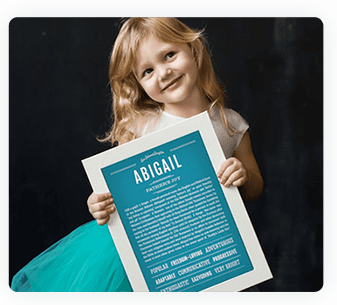Literary Characters
OF THE BABY NAME EMILY
Emily Charlton is a character in Lauren Weisberger’s 2003 novel, The Devil Wears Prada, which was made into a 2006 movie of the same name, with Emily Blunt as Emily. Against a background of a high profile fashion magazine run by a mercenary publisher, Emily, as the publisher’s senior assistant, appears at first to thrive in this environment. She is fashion-conscious, almost as icy and ambitious as her employer, and impervious to that employer’s slings and arrows. Emily’s dream is to accompany the publisher to Paris for the exclusive Fall Fashion Week, but fate intervenes, both intentionally and accidentally, and poor Emily is laid up in a hospital while the junior assistant takes her place. Defeated poor Emily may be – but she sure looks good at it!
Emily is the title character in William Faulkner’s Gothic 1930 short story, “A Rose for Emily”. Emily is the classic ante-bellum Southern left-over spinster from a family fallen on hard times. Under the dominance of her cruel father, she is not allowed to pursue her own dreams of love and independence. When the old man dies, Emily goes so far as to allow a lower class man, Homer, to court her, much to the surprise of the townspeople. One day Homer disappears; Emily retreats even further into her musty home and her solitude, ever haughty and aloof, and it is not until her death that her awful secret is revealed.
Emily Shelby is a character in Harriet Beecher Stowe’s famous 1852 anti-slavery novel, Uncle Tom’s Cabin. Emily is the wife of Mr. Shelby, the slave owner of Tom. She is an upstanding Christian, a loving and loveable woman, and she abhors slavery. When Mr. Shelby sells Tom, it is Emily Shelby who does her utmost to save up enough money to try and buy him back to be with his wife. Her efforts are in vain against the monstrosity of the system, but her kind heart does much to alleviate the suffering around her.
Little Em’ly is a character in Charles Dickens’ novel, David Copperfield, published in 1850. Emily is the niece of David’s housekeeper, and an early love interest for him. She is a sweet little girl, but she has a vanity that impels her to strive to the upper classes. This results in her jilting her good suitor, Ham, and running away with the snobbish James Steerforth – without benefit of marriage, mind you. After many years, her uncle tracks her down, abandoned and on the verge of even worse sin. The usual remedy – emigration to Australia, of course. Not a bad outcome, after all, especially insofar as both Ham and Steerforth meet their deaths by drowning.
Emelye is a character in The Knight’s Tale, the first of Chaucer’s 14th century Canterbury Tales. Emily, the sister-in-law of Theseus, is a beautiful young woman who has pledged to remain unmarried. The best laid plans, however, are subject to her becoming the love interest of dueling cousins, Palamon and Arcite, who arrange a tournament so that one of them may win her hand. Emily is devoted to the goddess, Diana, and prays to her to accept her as a virgin huntress in the goddess’ service. No marriage and children for her, says Emily – why, she’d rather be a woodworker! Weelll, if she has to do the girly thing, then, if you please, Diana, make the winner the man who loves me most. We won’t spoil the suspense by telling you which man wins.
Emily is one of the main characters in Thornton Wilder’s groundbreaking 1937 play, Our Town, for which he won a Pulitzer Prize. Emily is second in importance to the Stage Manager, as she represents the totality of everyday life in one cycle, and articulates to us, the audience, the hard-learned lesson of the precious transience of that life. From childhood to young girlhood to married life to motherhood, Emily walks in the steps of Everywoman, as she tentatively tries on each new cloak of passage and adapts to what life has to offer. In her case, in addition to love and familial bonds, life offers early death. She is allowed to come back for one brief moment of her childhood, but she cuts it short, in the full realization of what we, in everyday life, often ignore –“Do any human beings ever realize life while they live it?—every, every minute?” Good question, Emily.







